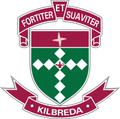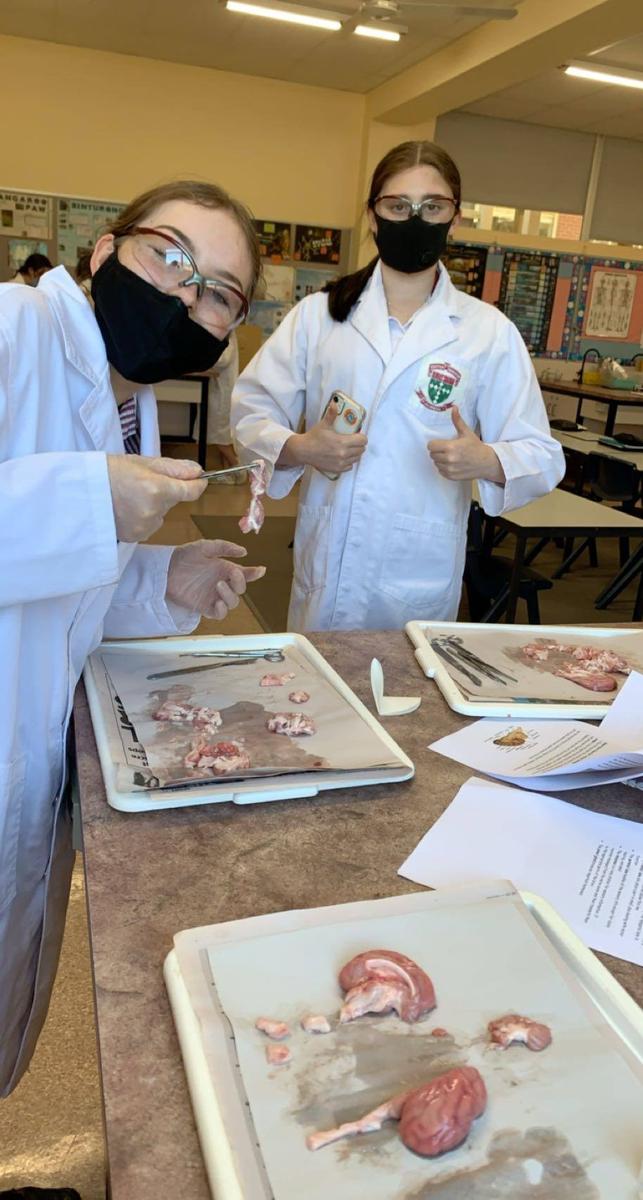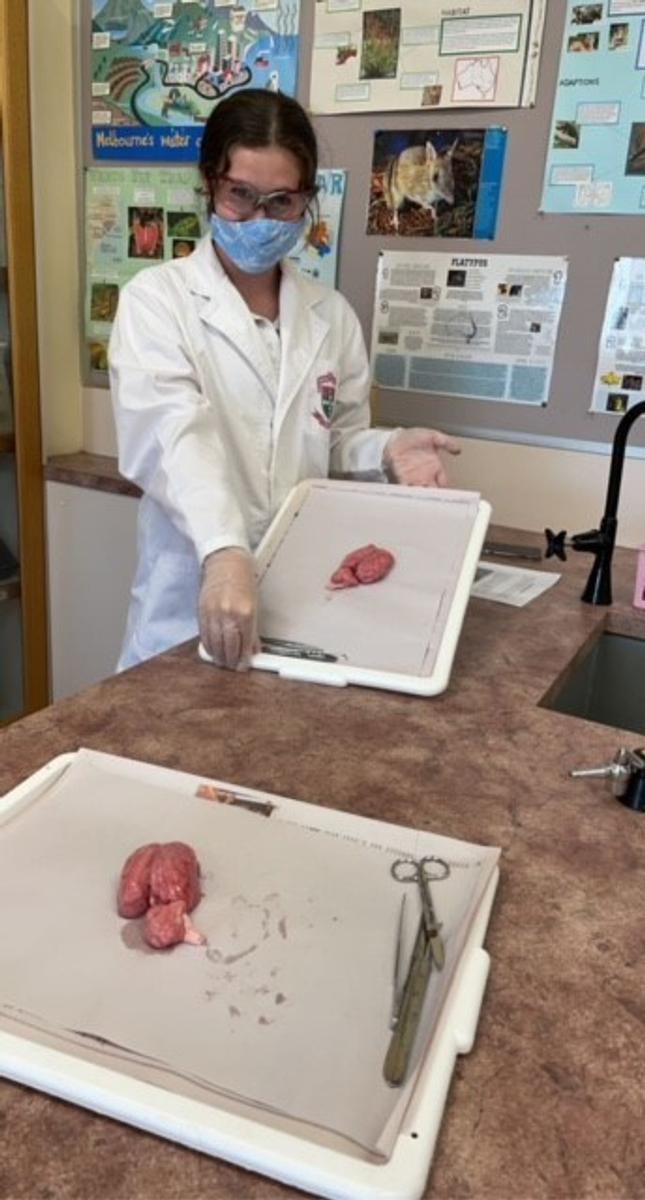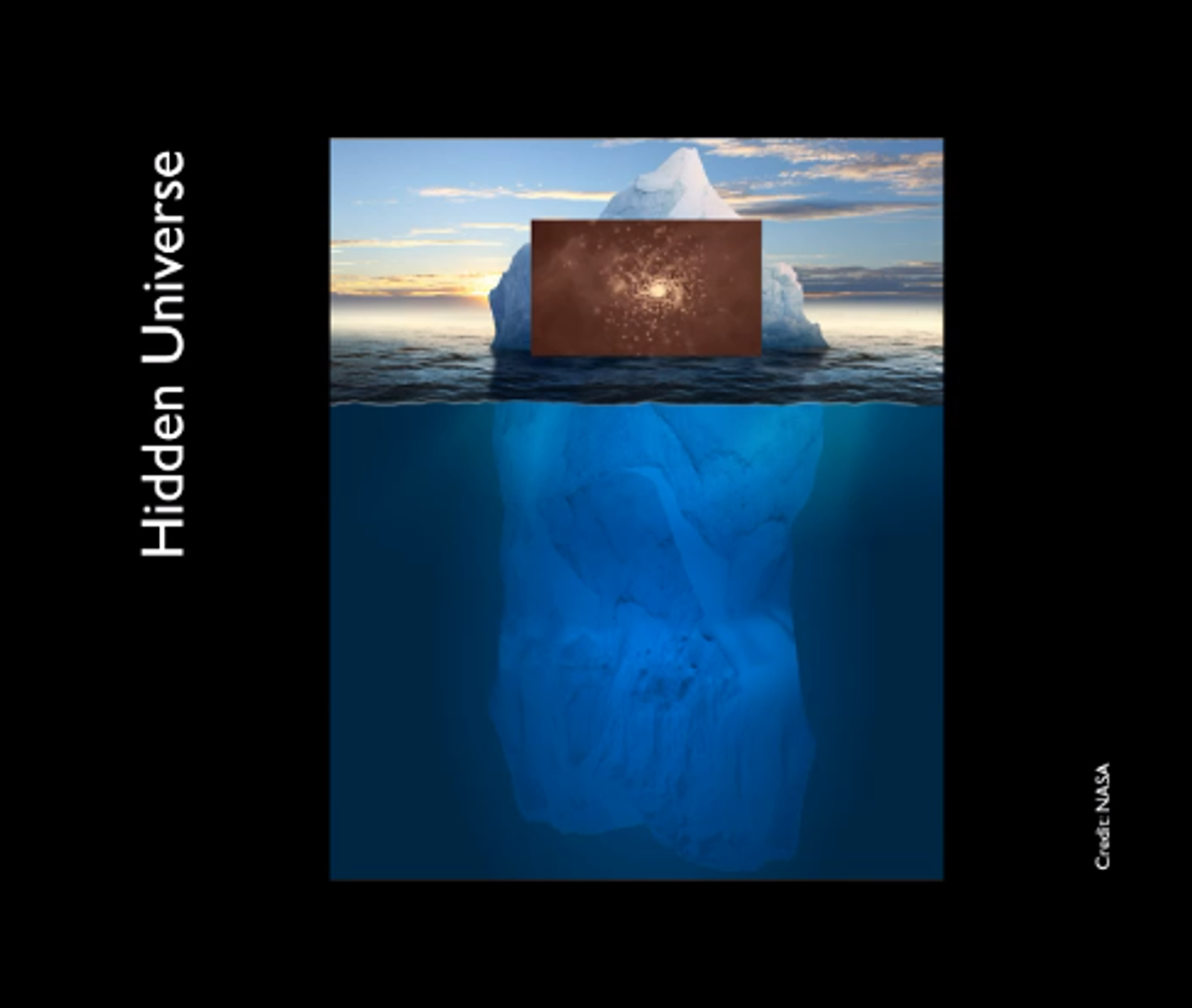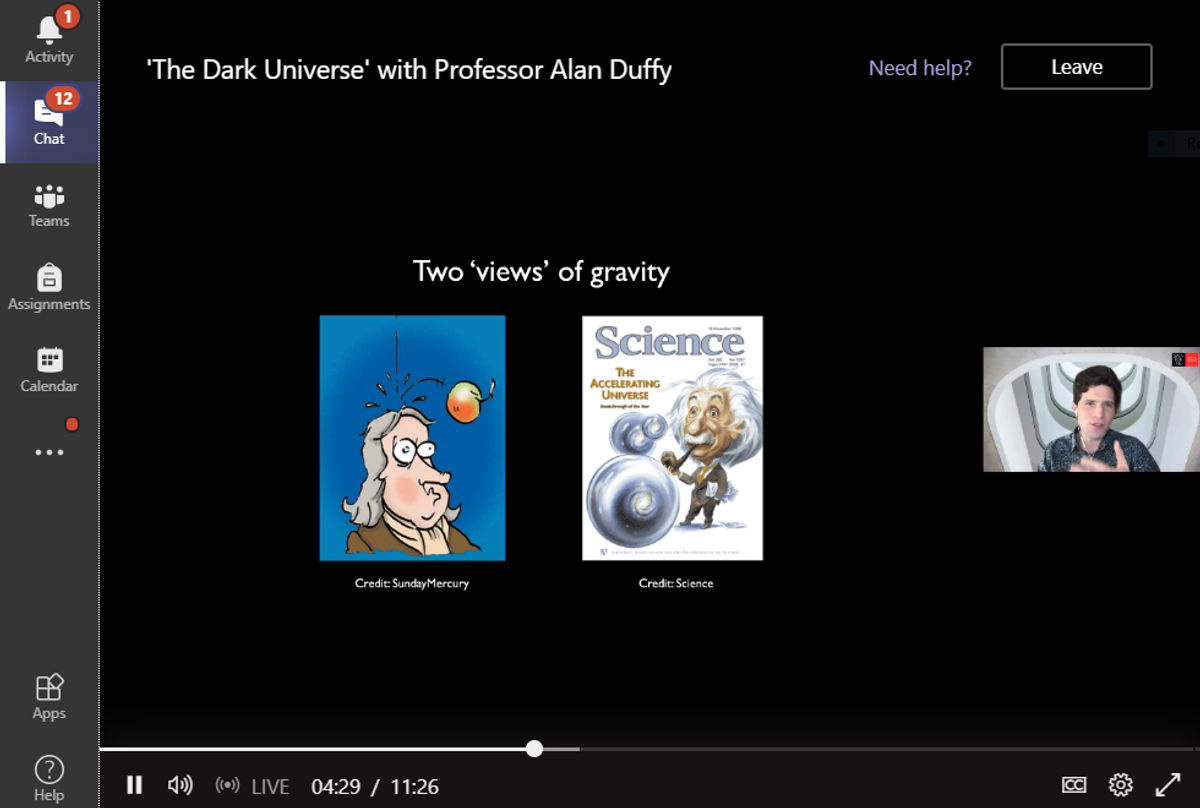Science

Brains in Science!
During remote learning, the Year 10 Medical Science/Psychology class completed a virtual brain dissection to assist their learning about the structure and function of the brain. Now that students are back onsite, Mrs Kylie Carroll organised the students to complete an actual dissection of a sheep’s brain in the laboratory.
In their studies, the girls had investigated structures of the brain such as the hemispheres, the role of neurons and impulse transmission as well as how our environment can affect optimum brain functioning-especially in the teenage brain. The students found the dissection fascinating and it was a great way to consolidate learning. Literally using brains in Science!
The Dark Universe
Mr Nick Howes is a teacher at Caulfield Grammar School. Nick used to work at Kilbreda and generously invited any interested Kilbreda staff and students to a webinar after school on 18 November, featuring the astrophysicist, Professor Alan Duffy from Swinburne University.
Professor Duffy was asked to speak about dark matter, dark energy, black holes, gravity, the chance of life existing on other planets and the future of the universe.
In around 45 minutes, he managed to clearly outline what we currently know about each of these factors, or, in some cases, such as dark energy, what we don’t know about them!
Here is a snapshot summary of the darkest elements of our universe!
Dark Energy - The mysterious energy that is pulling the universe apart. We don’t understand what this is or how it works! We do know that dark energy will continue to push everything in the universe apart and we believe that eventually, the universe will end up as a cold and lonely place with the trillions of galaxies spread far apart.
Dark Matter - Dark matter is invisible matter that distorts nearby light. Through this gravitational lensing, we can 'see' its effects. Professor Duffy compared this lensing as what happens when you look at a black dot drawn on paper as seen through the top of a wine glass that is placed over the dot. You will see a ring of this dot replicated around the original dot. If you view the dot on an angle, you will see an arc around the dot. Images of the night sky captured using the Hubble telescope actually show us these arcs and discs around galaxies. These images are the result of dark matter. There is about five times more matter that is 'dark' or invisible to us, than that which is visible. What we can see in the universe is literally like seeing the tip of an iceberg.
Dark matter exists as giant ghost-like webs inside which galaxies are held together. In fact, dark matter passes through you, and everything around you, all of the time.
A team of scientists from Australian universities and international agencies have constructed the Stawell Underground Physics Lab (SUPL) in which they hope to find evidence of dark matter. Their laboratory is located in an old gold mine, and is located one kilometre below ground.
To delve further into the wonders of dark matter, please see HERE.
For more details on the SUPL search for dark matter project, please see HERE.
We are grateful to Caulfield Grammar for inviting us to share in such a mind blowing webinar!
Jacinta Devlin
Learning Leader: Science
Main Image Credit: space.com
